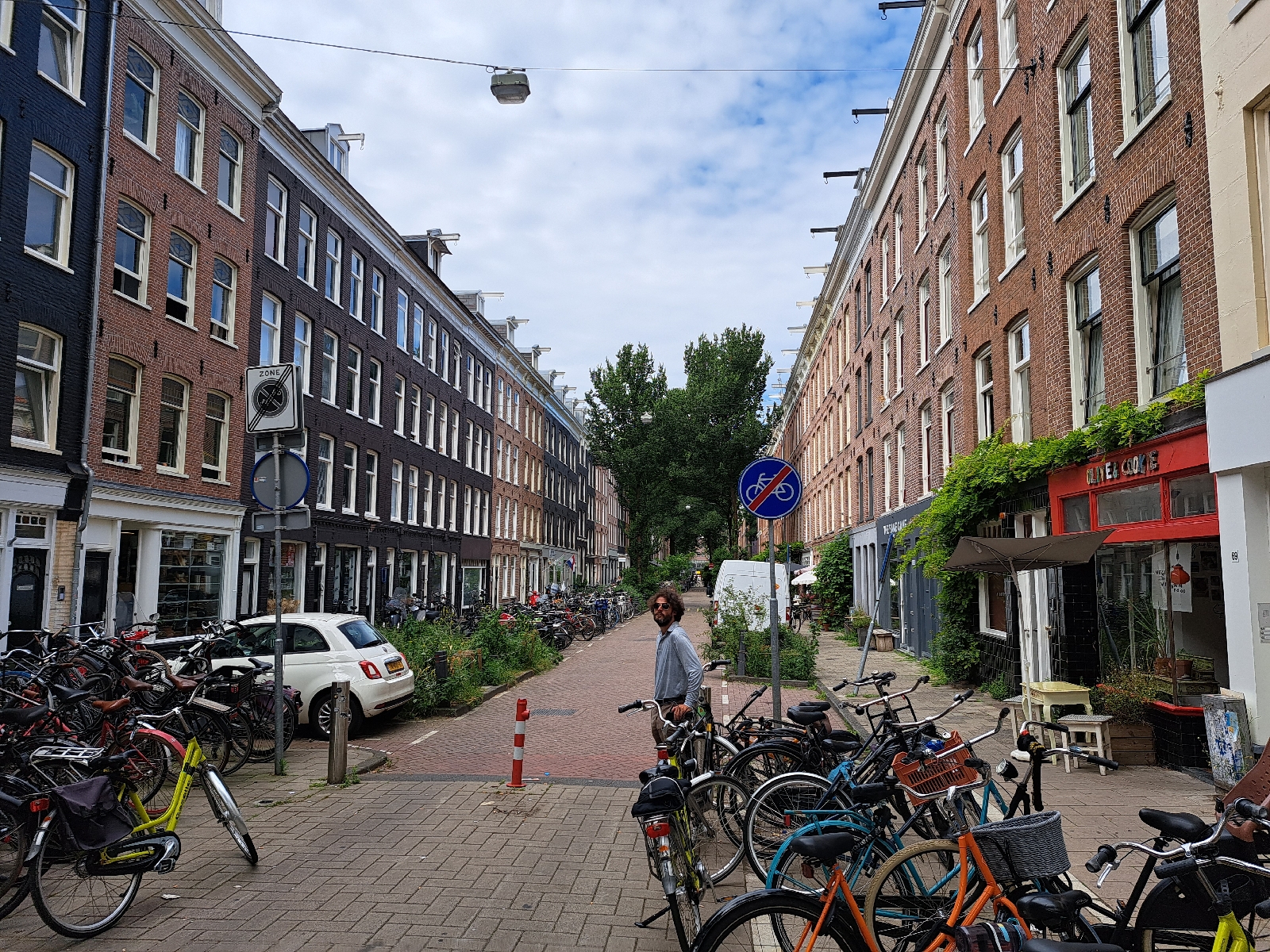Transit, a piece of the pedal puzzle (Day 21 Netherlands)
It's a bit startling how easily people can get around here in the Netherlands. Short distances or long distances, we can move about without a ton of planning. We met up with Bradley Tollison, a former participant of this learning abroad program, at the Driebergen-Zeist train station to learn more about how cycling complements transit more than it competes. When a region makes an ongoing effort to make a less-car life a real possibility, it pays attention to human behavior. In the Netherlands, the city planners noticed that a large portion of bike trips went to or from trains.
(Photo from Cuijk Station near Nijmegen)
Turns out, people living in Denmark can participate in a program where they use the same card as the train trips for a bike share bike. So, they can bike to the train (possibly on their own bike), park it, take the train, then borrow an OV fiets (bike) to complete the journey on the other end. I'd noticed these bikes at the stations near Nijmegen (like Cuijk) and in the bike parking garage at Utrecht Central Station.
These aren't the clunky bike share bikes of the US (docked or not). They're the basic Dutch bike in good working order and easily available at the stations. The bikes themselves seemed far more likely to be spotted out and about in Utrecht.
This day really struck home for me. Here was a real life example of a smaller town and a suburb both being linked to the job opportunities and resources of the big city without sacrificing their time and energy to all the space and worries of cars. This country, once a country that demolished neighborhoods, paved over waterways, and generally prioritized cars, made decisions over time that reclaimed space for people trying to get around--by allowing them to get around safely by bike and conveniently connecting to transit for longer distances. We heard about it from Nijmegen to Odense to Amsterdam. What's more, transit service providers compete for the service contracts and must meet scheduling, station amenity, and other requirements. Labor unions make sure people get paid well instead of making overwork and underpayment the so-called competitive advantage for the service companies. It's a way of thinking and planning transportation system that could work in many regions in the US.
Yes, the shift to prioritizing people over cars took time, but time will pass anyway. Changes of one kind or another will take place. The Dutch approached transportation as an efficiency and quality of life issue. Bikes and transit move more people and take up less space than cars. Providing that safe bike infrastructure and timely frequent transit service came about through policy changes both unplanned--as the initial behavior pattern of people biking to train stations--and planned--as the rollout of the OV fiets program. We could do this at home and be better off for it.
Random pic of the day: The awesome utility sport I found under a bench.









Comments
Post a Comment